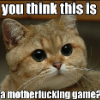[Guide]Creating pixel-perfect text of small size
-
Posts
-
By metatg.org · Posted
METATG.ORG Direct Telegram Service Provider A bonus of +7% on every order! *We add 7% more followers than your ordered amount to proactively cover potential drops and guarantee you an honest result." Telegram Followers - Price per 1000 SUBSCRIBERS Subscribers 3 days - $0.10 ~ 8 RUB Subscribers. Daily Completion: 200,000,000 Subscribers 7 days - $0.17 ~ 13.6 RUB Subscribers. Daily Completion: 200,000,000 Subscribers 14 days - $0.20 ~ 16 RUB Subscribers. Daily Completion: 200,000,000 Subscribers 30 days - $0.30 ~ 24 RUB Subscribers. Daily Completion: 200,000,000 Subscribers 60 days - $0.40 ~ 32 RUB Subscribers, 14-day guarantee. Daily Completion: 200,000,000 Subscribers 90 days (Super Fast) - $0.50 ~ 40 RUB Subscribers, 14-day guarantee. Daily Completion: 200,000,000 Subscribers 120 days (Super Fast) - $0.60 ~ 48 RUB Subscribers, 14-day guarantee. Daily Completion: 200,000,000 Subscribers Lifetime (Super Fast) - $0.70 ~ 56 RUB Lifetime Subscribers. 14-day guarantee. Daily Completion: 200,000,000 Telegram Services - Price per 1000 Post Views - $0.06 ~ 5 RUB Reactions - $0.08 ~ 6.5 RUB Bot Starts - $0.10 ~ 8 RUB Bot Starts with referrals - $0.15 ~ 12 RUB DISCOUNTS and CASHBACK for large volumes Direct Supplier. We work from our own accounts with our own software! High execution speed. Multiple payment methods. We work 24/7! Additional discounts are discussed for volumes starting from $1000 per day. SUPPORT 24/7 - TELEGRAM WEBSITE 24/7 - METATG.ORG -
This is a bump: https://databay.com/
-
Added: a brand-new default dashboard template. You can now add multiple game/login server builds. Full support for running both PTS & L2J servers simultaneously, with switching between them. Payment systems: added OmegaPay and Pally (new PayPal-style API). Account history now stores everything: donations, items delivered to characters, referrals, transfers between game accounts, and coin transfers to another master account. Personal Promo Code System: you can create a promo code and assign it to a user or promoter. When donating, a player can enter this promo code to receive bonus coins, and the promo code owner also receives a bonus — all fully configurable in the admin panel. Look demo site: demo
-
MoMoProxy Integrate with Adspower Browser
-
MoMoProxy has updated more static residential proxies for USA location, anyone interested in can view: https://momoproxy.com/static-residential-proxies
-
-
Topics






.jpg.4a8af448ba34b409af662c668c0c5f45.jpg)






Recommended Posts
Create an account or sign in to comment
You need to be a member in order to leave a comment
Create an account
Sign up for a new account in our community. It's easy!
Register a new accountSign in
Already have an account? Sign in here.
Sign In Now